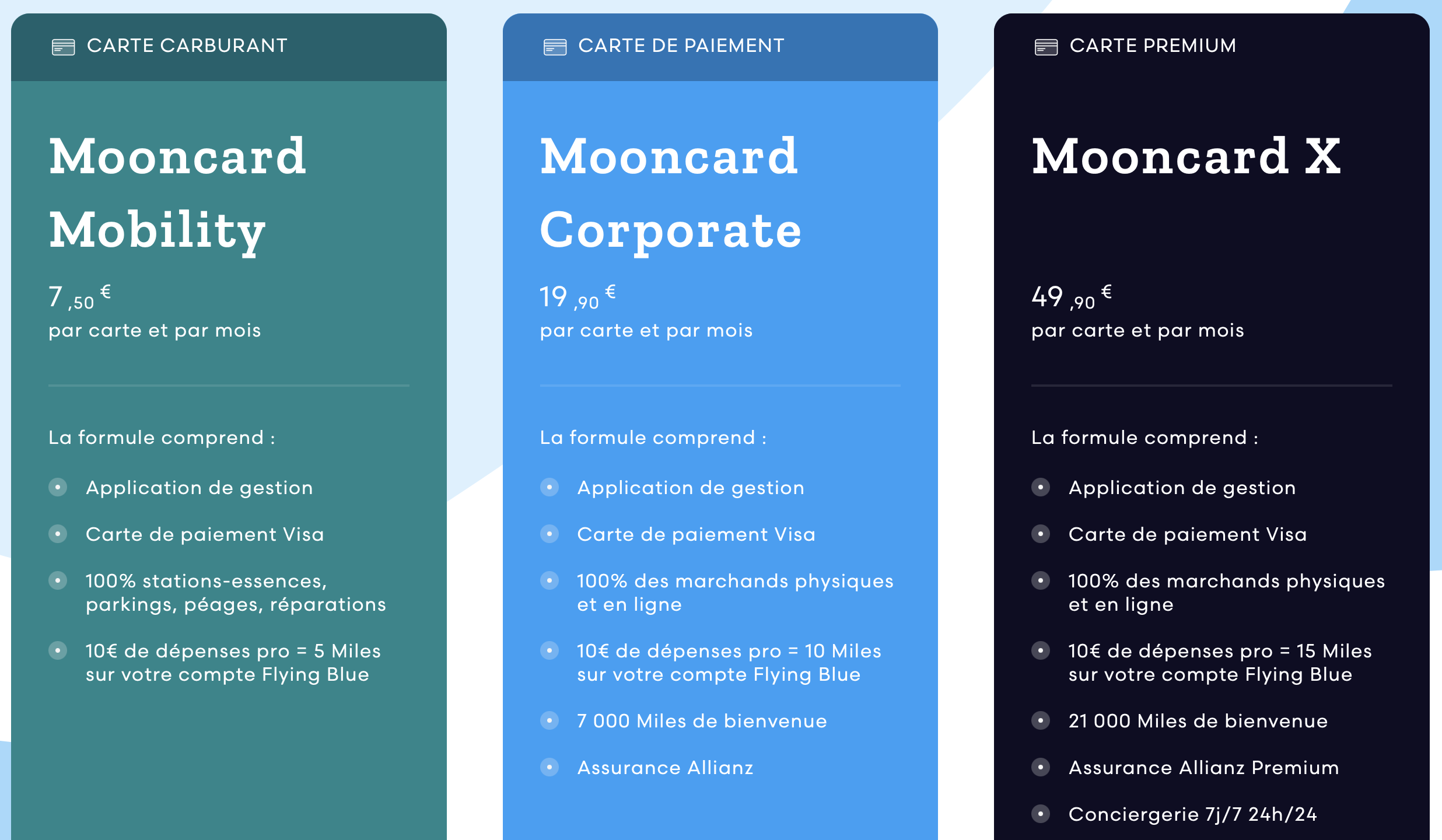French startup Mooncard is partnering with Flying Blue to offer Air France miles to its customers. This is the first time you can earn miles with a payment card in France that isn’t an American Express card.
Mooncard provides corporate payment cards to streamline your expenses. Most companies in France don’t use corporate cards. But fintech startups have created corporate cards that can help you streamline expenses.
In addition to Visa cards, Mooncard lets you easily take a photo of your receipts, add details and submit expenses to your accounting team. You can set up different limits and validation processes.
Today’s news is interesting as American Express has been in a monopolistic position for decades with its partnership with Flying Blue. In France, companies had to choose American Express if they wanted miles as perks.
When it comes to pricing, it looks pretty similar to what American Express offers:

There’s one big difference — Mooncard relies on the Visa network. As many restaurants and shops don’t support American Express, it could be enough to lure customers away from American Express. Employees can use their miles for personal trips.
There are 3,000 companies using Mooncard as well as many public institutions.
Comments
Post a Comment